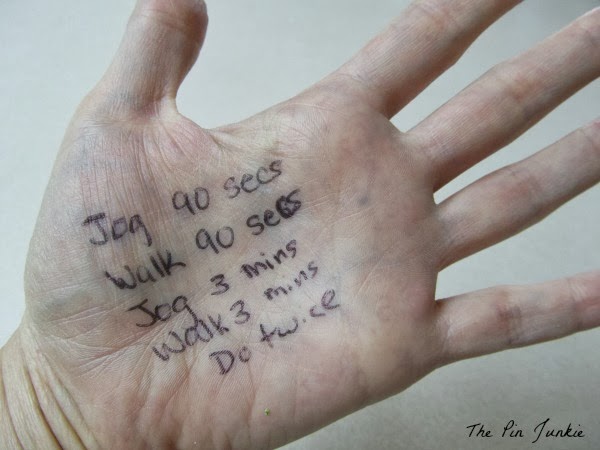 As we endure yet another snowfall, I anxiously await the onslaught of emails I will receive about 3-4 weeks from now. Most of them will sound like this:
“I ran the big race race last fall, took December off, then couldn't really train much in January or February (due to xyz excuse), but I really want to run the upcoming big spring race (usually the Broad Street Run here in Philly)!”
As we endure yet another snowfall, I anxiously await the onslaught of emails I will receive about 3-4 weeks from now. Most of them will sound like this:
“I ran the big race race last fall, took December off, then couldn't really train much in January or February (due to xyz excuse), but I really want to run the upcoming big spring race (usually the Broad Street Run here in Philly)!”
So, if I'm hearing you correctly...
You were in-shape, life happened (aka priorities shifted), now you're out-of-shape and wondering if there's a way to safely ramp up for the big race. Yes?
I'll save the verbal lashings for later (argh, how dare you slack off and ruin everything??). You've got a race to prep for!
Adjust Expectations
As in, don't have any other than having fun. Sure, as race day approaches you'll want to know approximately what pace to run and you'll be able to figure that out in the meantime. From the outset however, I believe it's important to let go of time or other outcome-based goals like finishing place or kicking your friend's butt. They'll just add unnecessary pressure and potentially cause you to take risks with training.
Train SMART(er than usual)
Look, you're not exactly starting from zero. At least your head remembers what it's like to race. But perhaps we should respect the de-training that happened and treat your body accordingly.
1. Grab your foam roller and keep it handy. Start using it daily and focus on some of the usual suspects: calves, quads (inner and outer, too), and hips. Maintaining a high degree of soft tissue quality is HUGE.
2. Focus on rebuilding your base. This means running easy – slow, even. Remember your connective tissue has probably weakened and will be vulnerable. Rely on nose breathing to make sure you're running slowly enough.
3. Try for 4-5 days of running and don't be shy about walking. If you're way out of the training loop, definitely use walking. Walking is great for the connective tissue and allows you to extend your workouts so that you can build your endurance.
For example, 4X [brisk walk 3 minutes, run easy 6 minutes] allows you to get a 36 minute workout versus 24.
For long runs, I like: 3X [brisk walk 10 minutes, slow run 10-20 minutes.] See? You just got a 75-90 minute session without the same pounding a straight run would offer. You're learning to handle fatigue while minimizing your injury risk. Win-win!
4. Some of you may feel as though you need to fight the urge to train harder. You want to be in shape NOW. OK, I get it!
So generally this will be a mistake as injury risk goes up as intensity increases. Is there a way around this problem?
You could incorporate high intensity intervals, but I'd recommend getting it done ideally via weights (kettlebell swings) or another non-impact form of training. Cycling, swimming, rowing, elliptical-ing are all ok, but...
I love the idea of using moves that use a larger range of motion, require less repetition, AND develop your strength/power. Assuming your kettlebell swing technique is clean (and I realize that may be a big assumption), then the following would be a great workout:
10-20 minutes of: 20 seconds of swings, 40 seconds of rest.
Extremely simple. Not easy, though! Here's a video on swing technique ;-)
A lower risk proposition is to simply tack 5 minutes of uptempo running onto the end of any run and/or include 6-10 100m strides throughout any easy run. It's not enough intensity to break you down, but enough to give you a fitness boost.
So to sum up, coax the body back to fitness rather than forcing it. Reduce expectations, but realize that people often perform BETTER when they free themselves from expectations. If you really are short on time, high intensity training works well, but carries greater risk. Feel free to contact me to discuss what may be right course of action for you!

